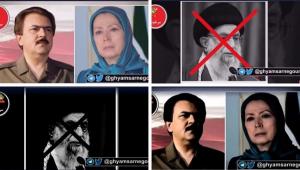(Video) Iran: Khamenei’s defeat in stifling protests
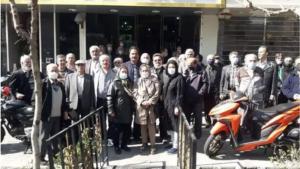
On Sunday, February 27, retirees and pensioners in dozens of Iranian cities returned to the streets to reiterate their demands and hold the government and Majlis to account for disregarding their most basic needs.
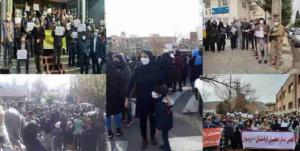
Retirees are not the only growing protest movement in Iran. Teachers, students, oil-and-gas workers, nurses, defrauded investors, and government employees are also becoming more organized and bolder in pursuing their demands.
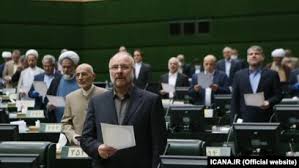
Prior to that, Khamenei had ensured that the Majlis (parliament) is filled with his loyalists, with Mohammad Bagher Gahlibaf, a former Revolutionary Guards commander, becoming the Speaker of the Majlis.
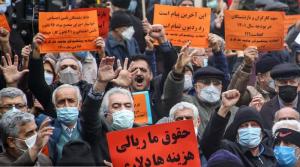
The main reason which regime officials refer to as a “major surgery,” is the growing unrest in Iran’s society. The regime had barely survived several rounds of nationwide protests, and the shadow of another uprising is looming on the horizon.
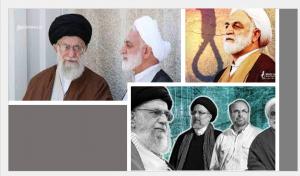
Khamenei needed to suppress any type of infighting and make sure that the executive, judiciary, and legislative branches of the government were in control of cold-hearted criminals like Raisi, Ghalibaf, and Gholam-Hossein Mohseni Ejei.
Raisi, who is notoriously known for his key role in the execution of 30,000 political prisoners in 1988, has earned himself the nickname of “butcher” in Iran.
Their demonstrations, which have become a mainstay of Iran’s news, have grown, and become more intense and better organized despite the regime’s efforts to establish an environment of fear and intimidation.
And retirees are not the only growing protest movement in Iran. Teachers, students, oil-and-gas workers, nurses, defrauded investors, and government employees are also becoming more organized and bolder in pursuing their demands.
The growing protest movements are a testament to the failure of the strategy of the regime's supreme leader Ali Khamenei to strengthen his regime.
Last year, Khamenei set the stage for then-judiciary chief Ebrahim Raisi to become the regime’s next president.
Raisi, who is notoriously known for his key role in the execution of 30,000 political prisoners in 1988, has earned himself the nickname of “butcher” in Iran.
Raisi assembled a cabinet filled with terrorists, criminals, and thieves who are deeply loyal to Khamenei.
Prior to that, Khamenei had ensured that the Majlis (parliament) is filled with his loyalists, with Mohammad Bagher Gahlibaf, a former Revolutionary Guards commander, becoming the Speaker of the Majlis.
These moves were meant to fulfill Khamenei’s vision of a “Hezbollah government,” a state that is devoted to keeping the mullahs’ rule afloat at all costs.
Of course, the assembly of the Hezbollah government came at a great cost to Khamenei and the regime.
To achieve it, Khamenei had to purge the regime’s not only the so-called moderate faction that provided the regime with a ridiculous façade of political diversity on the international front and allowed Khamenei to blame all the failures of his regime on those he deemed as his rivals, but also, many members of his own faction.
The main reason for this reshuffling, which regime officials refer to as a “major surgery,” was the growing unrest in Iran’s society. The regime had barely survived several rounds of nationwide protests, and the shadow of another uprising was looming on the horizon.
At the same time, (PMOI-MEK )Resistance Units are becoming an increasingly influential force for change inside Iran.
Khamenei needed to suppress any type of infighting and make sure that the executive, judiciary, and legislative branches of the government were in control of cold-hearted criminals like Raisi, Ghalibaf, and Gholam-Hossein Mohseni Ejei, who replaced Raisi as judiciary chief.
The new lineup would supposedly be perfect to deal with Khamenei’s main enemies and source of concern, the Iranian people, and their resistance movement.
To further spread fear, the regime ratcheted up executions, arrests, and persecution of protesters and dissidents in recent months.
However, less than a year after Raisi rose to power, things are not looking good for Khamenei.
Not only have protests not diminished, but they have become louder, stronger, and more organized. One only needs to look at the protest movements of teachers, farmers, and pensioners to see how the people of Iran have responded to the regime’s tactics.
While many of these protests began with economic demands, they have gradually evolved into political movements that criticize the corruption and tyranny of the regime and at times call for the overthrow of the mullahs’ rule.
On Sunday, the pensioners were calling for the release of political prisoners and arrested activists. Prior to that, protesting teachers, who have been raising their voices for their most basic rights for months, warned the regime that the “teachers’ movement is ready for an uprising.”
And before that, the farmers of Isfahan, whose weeks-long protest rallies were brutally suppressed by the regime’s security forces, responded with chants of “Death to Khamenei” and “Death to the dictator.”
At the same time, the recent weeks have seen a growing wave of activities by the Resistance Units, who have been broadcasting anti-regime slogans in public places and setting fire to posters and statues of regime leaders and icons.
All these facts point to the undeniable reality that the Iranian society is ready for regime change. And Khamenei, sitting on a powder keg, is running out of tactics to delay the overdue demise of his regime.
Shahin Gobadi
NCRI
+33 6 51 65 32 31
email us here
The past 40 years have proven that the mullahs’ regime has no respect for the rights of Iranian workers.
Legal Disclaimer:
EIN Presswire provides this news content "as is" without warranty of any kind. We do not accept any responsibility or liability for the accuracy, content, images, videos, licenses, completeness, legality, or reliability of the information contained in this article. If you have any complaints or copyright issues related to this article, kindly contact the author above.

